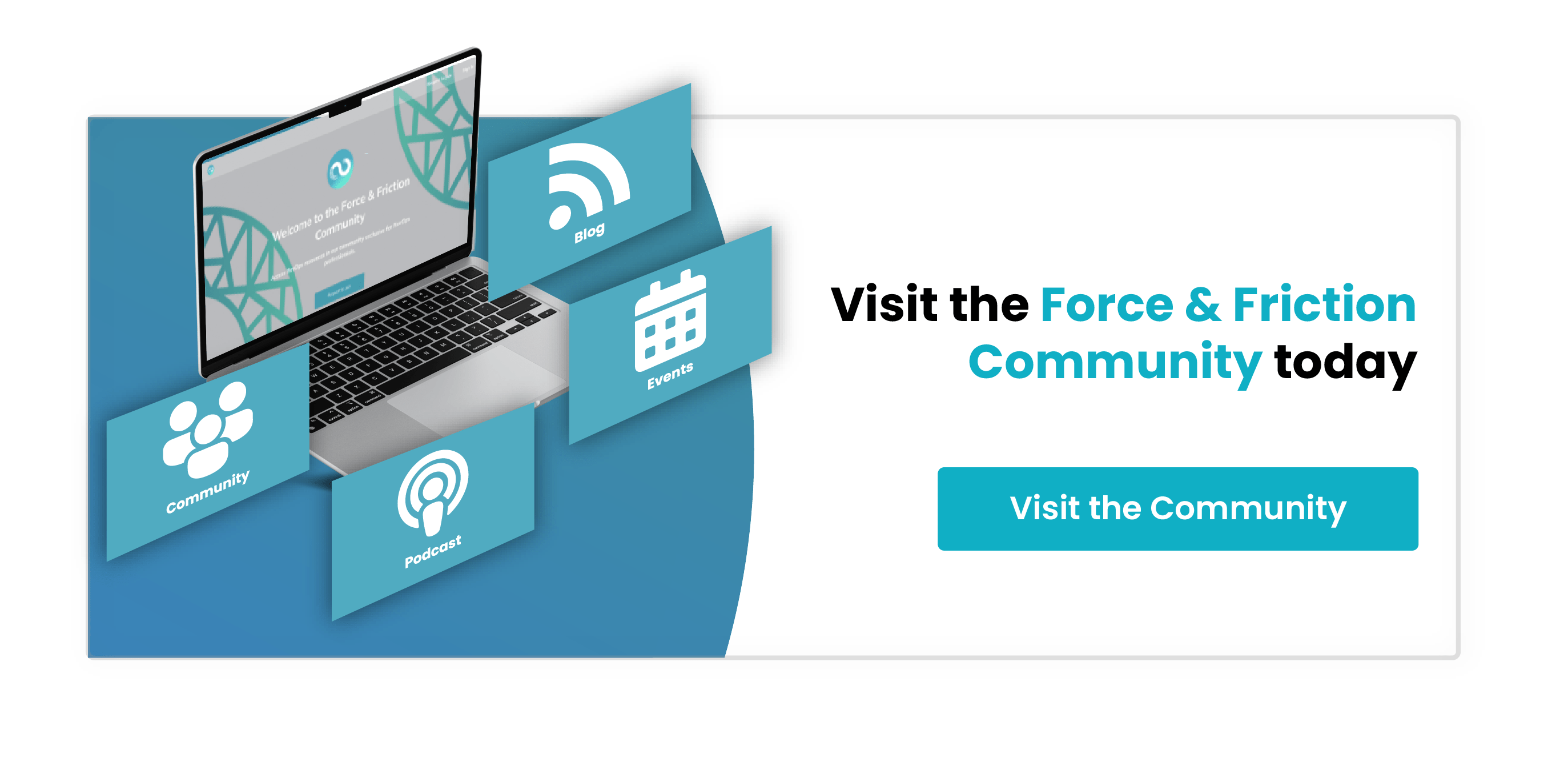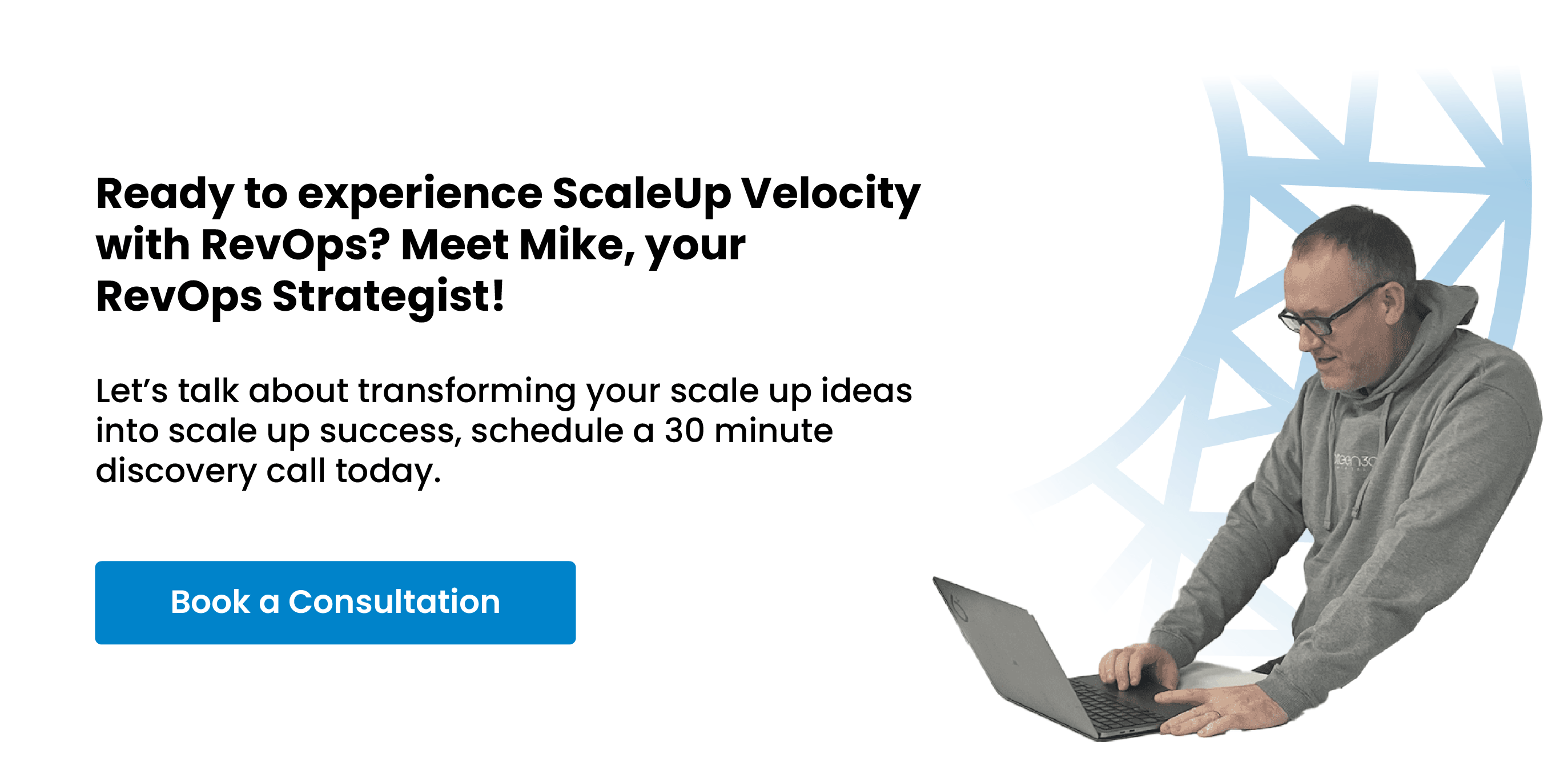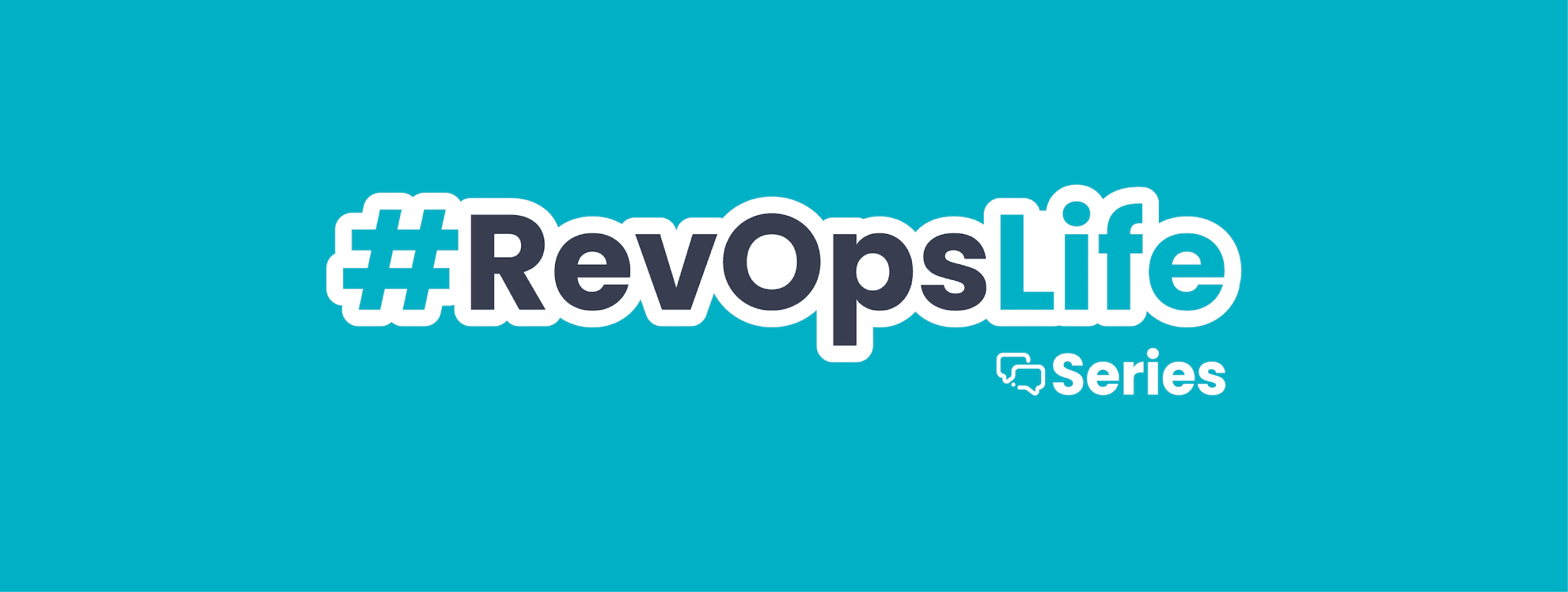
How to Communicate the Value of Revenue Operations to Your Company Leaders
Communicating the value of RevOps to your company leaders is very similar to learning a new language.
While your focus may be on the shop floor, what customers are saying, how they interact with your products and what’s happening with marketing and sales, the C-Suite talks a totally different language.
They’re focused on performance, profits, and loss. The C-Suite is also interested in the cost of doing business and operations by their nature are a business cost.
Bridging that divide to articulately make the case for RevOps, and justifying that additional investment in operational expenses, is vital to securing the resources and buy in you need to move the business closer to its goals.
That process could be more challenging than it appears at face value.
As a relatively new field, RevOps’ strategic alignment of people and process may be a harder sell than a piece of new software or a new hire alone. And that’s because it’s unlike anything that has come before. It’s an amalgamation of different disciplines.
“RevOps is not simply about adding “another role” or changing an existing leader’s job title. RevOps also is not just another organizational redesign process,” notes Gartner.
“The future of revenue production requires an understanding of the following three distinct components:
-
Centralized approach to operations and separation of functions from operations.
-
Communal data layer across the revenue engine.
-
Continuous customer engagement model that is bidirectional.”

Change can often be met with resistance, especially if roles and responsibilities are being redefined and new methods of working are being introduced. Inevitably, you’ll need to demonstrate why something that has seemingly worked so well before - “we’ve always done it this way and it’s got us to this point” – can be made better by RevOps.
In short, you must be able to communicate the value of making those changes in a way that resonates with senior executives.
Learning the Language of Business to Communicate RevOps Benefits
As a concept, RevOps ensures the business can scale in the most efficient way possible. It’s about optimising processes and baking in efficiencies across the organisation. That brings clear cost saving benefits, increases revenues, decreases wasted spend, reduces customer churn, and makes each business unit leaner, and more competitive. It helps the business to grow.
So, how do you convey that in business language?
While you may be convinced of the value of greater collaboration, more systematic processes, and enhanced data sharing, those day-to-day benefits rarely filter up to the C-Suite in a way that makes sense.
Typically, that will mean you’ll need to go a stage further, beyond the immediate practical and day-to-day changes and extrapolate the impact of those RevOps strategies on metrics that matter to the higher ups.
That means becoming comfortable translating for example greater accountability between sales and marketing into revenue, profit, cash flow and so on.
Earlier, we said that communicating value to business leaders is similar to learning a new language. And that’s because you’ll need to use and understand terms that you had no reason to know before in order to make a compelling business case for RevOps.
As per Gartner, companies with an aligned end-to-end revenue engine grow 19% faster and are 15% more profitable than their rivals. So RevOps fundamentally enables the things that the C-Suite want to see – more profit – but your job here is to explain the how and the why so your RevOps project gets the green light in the first place.
Accounting is the language of business. Profit, loss and assets determine how well the business is performing and whether it can survive.
Because RevOps is fundamentally about business growth, it makes sense to arm yourself with business knowledge – that means being able to speak comfortably about accounting and business financials so you can tie your RevOps activities into positive changes in the financial position of the business.
You’ll need to become familiar with things like the business balance sheet, profit and loss or income statement and what terms such as profit really mean, how they’re calculated and what influences them.
What does a business balance sheet tell us?
The balance sheet gives you a complete overview of the financial standing of the business.
Business assets:
One section of the balance sheet is dedicated to business assets.
Assets are things the business owns, such as property, land, and equipment, plus the amount of cash in the bank, the amount of money owed to the business by customers and inventory it has ready to sell.
Business liabilities:
Another section of the balance sheet will outline liabilities – things that will cost the business money within the next 12 months.
Common examples include taxes to be paid, interest on any loans the business may have taken out and bills that it must pay.
Liabilities should never be greater than the value of assets held by the business, as the business would then not be able to pay its debts and could face bankruptcy.
Equity:
How much money is left after total liabilities have been deducted from the total value of assets
What are income statements?
Also known as profit and loss (P&L), the income statement tracks the income the business has made. Often it will take the form of a spreadsheet with the present year’s figures sitting side-by-side with previous years.
It will track important figures such as revenue generated, cost of goods sold (the cost incurred by the business to make those sales in the form of materials, labour costs and overheads) along with operating expenses (wages, advertising, repair and maintenance costs, insurance costs, travel etc.).
Two of the most important figures on the revenue statement are gross profit and operating income.
Gross profit:
The amount of revenue generated minus the cost of goods sold.
Operating income:
Gross profit minus operating expenses.
What’s a cash flow statement?
The cash flow statement shows movement of cash in and out of the business. Quite simply, it shows where money is coming from and where it’s exiting the business.
The Six Sigma Cost of Poor Quality Consideration
Providing low quality products and services to your customers will inevitably give your business a poor reputation.
This could manifest as an increase in complaints, or a slew of negative reviews shared across review platforms and social media. It may also lead to a higher number of returns, cancelled orders, loss of customers or even legal action.
Improving product quality is one of the things that you can achieve with RevOps, but it needs to be shrouded in business terms to provide a compelling case to the board.
The Six Sigma Cost of Poor Quality (COPQ) defines how much providing low quality products or services costs the business.
This is an essential pillar in making the business case for RevOps because it helps you to communicate the cost of not implementing your project on those business accounts we spoke about earlier.
To understand why, let’s back up a minute.
Imagine you’re having a conversation with the C-Suite. You tell that them that implementing your RevOps project will make the business more efficient.
This generic statement doesn’t tell them why efficiency is beneficial in business terms. COPQ can help you frame the impact in a way that makes business sense.
What does COPQ tell the management team?
COPQ uses management language to convey how quality affects profit. It tells you which costs could be reduced, or eliminated entirely, if you were able to optimise every system, process and product.
This makes it easier to make the case for prioritising improvement in specific areas by developing more efficient processes and creating alignment between teams.
Now, back to that conversation with the C-Suite.
If rather than saying you want to make the business more efficient, you instead say “this inefficient process can be improved by RevOps so that we have X% less returns / reduce material costs by X% / reduce operating costs by X%” you’re suddenly speaking their lingo.
You’re telling them, in business language, how operational costs could be reduced by implementing RevOps and that’s suddenly very compelling.
There are four main components of COPQ:
-
Internal failures: The cost of things that go wrong within the business. This could mean teams wasting time and resources on projects that are not completed or materials being thrown away due to a fault or error with a machine.
-
External failures: The cost of issues after the product or service reaches the customer. If a product falls to pieces or develops an issue, there’s a cost to replace it or honour a warranty or guarantee. This also has a reputational cost, as customers may be less inclined to buy from you in future.
-
Appraisal: The better your processes and products become; the less appraisal costs the business will incur.
-
Prevention: How much the business spends to reduce the cost of internal and external failures.
The COPQ template
If you can make the cost of poor quality processes and products quantifiable, it’s much more likely that the management team will opt to invest in prevention in the form of RevOps instead.
The COPQ template sets out a problem, lists all the costs the business incurs as a result of the issue and calculates the total annual cost of that problem.
When making your case for RevOps, you can quote those numbers to show how much the business is currently paying because of that problem and then illustrate how your strategy will reduce those unnecessary costs.
With that reduction in costs established, you can then add in the additional revenue you can generate via RevOps as a result of aligning sales and marketing, removing inefficiencies and developing better systems and processes.
Learning to Persuade The 5 Stages of The Monroe's Motivated Sequence
Delivering any kind of proposal in an inspiring, engaging way is the key to success. Even the most compelling offer, delivered incorrectly can result in an audience that doesn’t feel excited, energised, or motivated to make a change by what you’re telling them.
Once you have your numbers figured out and feel comfortable that you’re able to speak the language of business to management, adopting Monroe’s Motivated Sequence can help you frame your presentation in a way that ensures your audience pays attention and feels inspired to take action.
There are five stages to consider:
Stage 1: Attention
Successfully delivering any speech or presentation, whether that’s pitching RevOps initially or reporting on progress three months in, all depends on whether or not you have your audience’s attention.
You could say the most interesting thing in the world 25 minutes into your pitch, but if you haven’t grabbed your audience’s attention from the start, chances are they’re mentally already checked out and not really listening to what you’re saying.
A strong attention grabber at the start makes your audience want to listen further. Common tactics to grab attention include sharing a startling statistic or fact, sharing a story or a compelling quote.
If you’ve done your homework and already have some incredible COPQ figures to share, those numbers could potentially serve as your attention grabber upfront.
Stage 2: Need
Now you have their attention, it’s time to describe the problem and explain to your audience why it’s a problem.
It’s important that you outline the impact of the problem from your audience’s perspective. If this issue isn’t solved, how will be affect them? What will the consequences be?
Stage 3: Satisfaction
Your audience understands the problem and the consequences of not resolving that issue.
Stage three of Monroe’s Motivated Sequence sees you setting out the solution. This is your chance to really sell in RevOps with a well-defined explanation of the many benefits it will bring.
Stage 4: Visualization
In this fourth and final stage of your presentation, your audience has a clear idea of the problem, and they have a clear understanding of your proposed solution.
Now, you need to drive home the improvement or benefit of applying your solution.
You can refer back to the Six Sigma Cost of Poor Quality (COPQ) figures here to reiterate how much money can be saved, how much revenue will grow by and by how much operating costs will be lowered.
To close out your presentation, end with a clear call to action so your audience is left energised and motivated to implement RevOps.







%20-%20Teal.png?width=500&height=130&name=Force%20%26%20Friction%20-%20Branding%20-%20Logo%20(White)%20-%20Teal.png)